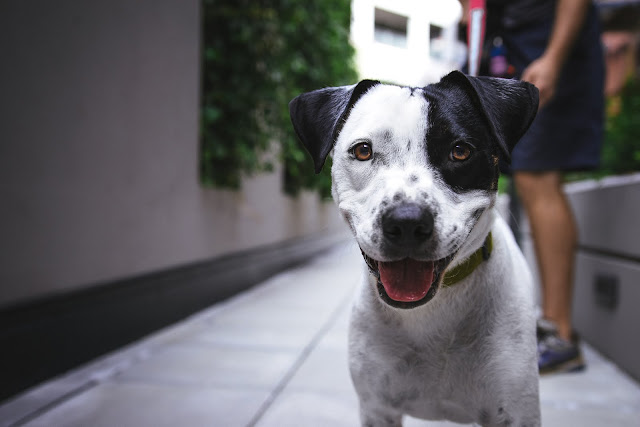Oral Hygiene: Why Caring for Your Pet's Pearly Whites is No Joke
Dental care
is one of the most commonly overlooked issues in our pets. In fact, most dogs and cats begin to show
some signs of dental problems by age three.
Many owners believe that these dental problems are simply a cosmetic
issue. They do not realize, however,
that poor oral hygiene can seriously affect the overall health and well-being
of their pet. If left untreated,
infection and disease can quickly develop. To
help fight dental disease, it is important to first understand what leads to poor
dental hygiene, the signs and symptoms associated with it, and the methods of
dental care used for prevention and treatment.
Most oral
hygiene issues begin with plaque. Plaque
forms as bacteria combine with saliva and debris. If plaque is left untreated, it hardens to
create tartar along the teeth and gum lines.
The bacteria present in tartar then begin to irritate the gums, causing
inflammation. As inflammation worsens,
bacteria continue to damage the gums and tissue surrounding the teeth. If these conditions are not addressed,
bacterial infections such as periodontal disease can develop in the areas
surrounding the teeth. Additionally, bacteria
associated with periodontal disease can enter the bloodstream and travel to
other major organs. This can lead to a much
more serious and extensive infection in the kidneys, heart, liver, or other
parts of the body.
There are
many signs to look for when checking for dental disease. The most common symptoms are bad breath and
red, irritated gums. Inflamed gums may
lead to pain or bleeding when eating, and may even cause a loss of appetite in
your dog or cat. You may notice plaque
or tartar as well, which can be identified by a yellowish buildup around the
base the teeth or gums. Missing and/or
broken teeth are another indicator of poor oral hygiene.
Good oral hygiene
can be easily maintained, especially if preventative methods are started at an
early age. There are many ways to
provide your pet with good dental care.
The easiest and cheapest way to promote oral hygiene is at home.
- Feed your pet quality, coarse-textured
food and treats. A healthy, balanced diet greatly reduces the buildup of plaque and tarter.
- Purchase an at-home cleaning kit. Toothbrushes, toothpaste, and other cleaning
products help to effectively remove plaque and kill bacteria.
- Have your pet’s teeth
professionally cleaned. Most veterinary
offices offer dental cleanings, however these professional cleanings do require
general anesthesia. Additionally, your
veterinarian may recommend having pre-anesthetic blood work run to ensure that
your pet will handle sedation safely.
Although relatively expensive, professional cleanings are extremely
effective and recommended at least once yearly.
- Have your pet checked yearly by a veterinarian. Making sure you get your pet in for their yearly checkup greatly reduces the risk of serious oral diseases. Your veterinarian can easily and quickly
examine your pet’s teeth and gums to determine if any problems are developing.
Dental care
is an extremely important, and often overlooked, aspect of your pet’s
health. Poor oral hygiene can lead to a
variety of health issues ranging from bad breath and inflamed gums to serious
infections. A combination of a healthy
diet, at-home teeth cleaning practices, and regular checkups with your
veterinarian will help your pet maintain good oral hygiene, giving him or her
something to smile about!
Our information is not intended to replace the advice of your veterinarian. Do not use this information for diagnostic purposes. Always take your pet to your veterinarian to obtain a diagnosis and course of treatment.
Good oral hygiene
can be easily maintained, especially if preventative methods are started at an
early age. There are many ways to
provide your pet with good dental care.
The easiest and cheapest way to promote oral hygiene is at home.
- Feed your pet quality, coarse-textured food and treats. A healthy, balanced diet greatly reduces the buildup of plaque and tarter.
- Purchase an at-home cleaning kit. Toothbrushes, toothpaste, and other cleaning products help to effectively remove plaque and kill bacteria.
- Have your pet’s teeth professionally cleaned. Most veterinary offices offer dental cleanings, however these professional cleanings do require general anesthesia. Additionally, your veterinarian may recommend having pre-anesthetic blood work run to ensure that your pet will handle sedation safely. Although relatively expensive, professional cleanings are extremely effective and recommended at least once yearly.
- Have your pet checked yearly by a veterinarian. Making sure you get your pet in for their yearly checkup greatly reduces the risk of serious oral diseases. Your veterinarian can easily and quickly examine your pet’s teeth and gums to determine if any problems are developing.
Dental care
is an extremely important, and often overlooked, aspect of your pet’s
health. Poor oral hygiene can lead to a
variety of health issues ranging from bad breath and inflamed gums to serious
infections. A combination of a healthy
diet, at-home teeth cleaning practices, and regular checkups with your
veterinarian will help your pet maintain good oral hygiene, giving him or her
something to smile about!
Our information is not intended to replace the advice of your veterinarian. Do not use this information for diagnostic purposes. Always take your pet to your veterinarian to obtain a diagnosis and course of treatment.



Comments
Post a Comment